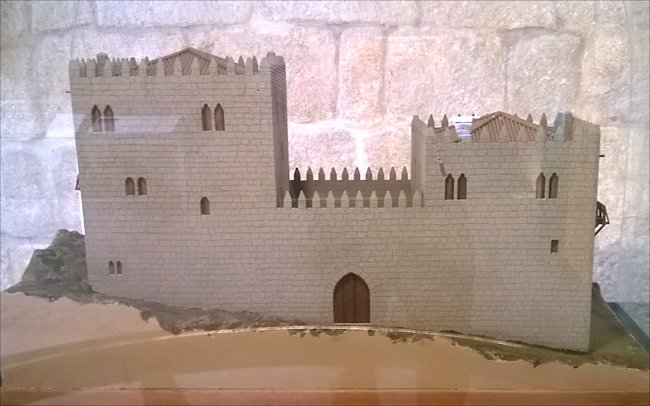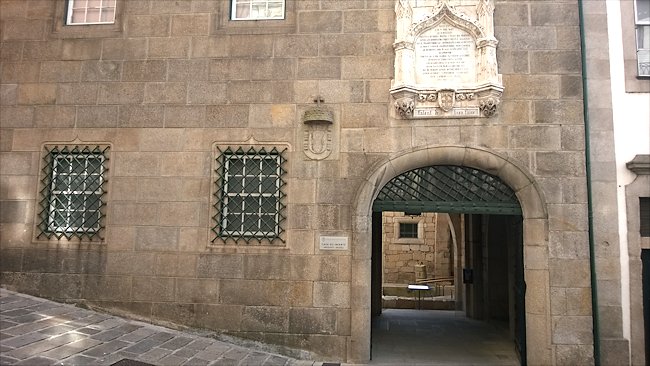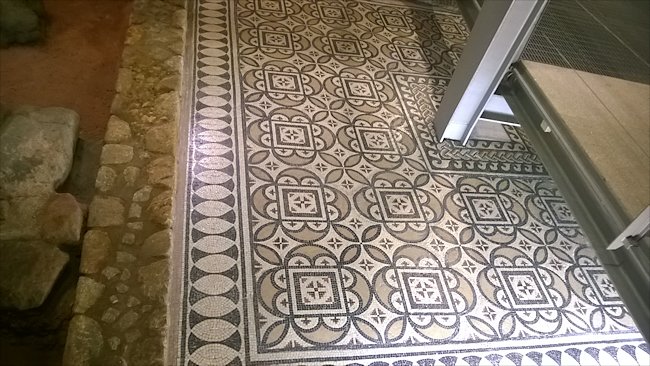Henry the Navigator's House Casa do Infante
Who was Henry the Navigator and why was he so important to the history of Portugal? Tourist visiting Portugal will see lots of references to him as well as statues on their visit.

Model of Henry the Navigator's House Casa do Infante in Porto
The great Portuguese trading Empire began under the direction of Henry. He would sponsor the building of faster ships and expeditions down the African coast. He encourage the science of navigation and map making so that Portuguese ships could trade further away from the home land.
He became rich on his cut in the profits. The knowledge gained of tides and shifting trade winds would eventually lead to Portuguese sailors crossing the Atlantic and also trading with Japan, China, India and Indonesia.
He was born 4th March 1394 in the northern tower of the Royal Mint and Customs House in Porto, now called the Casa do Infante which translated means the Prince's House. Henry was the third surviving son of King John I and his English wife Philippa of Lancaster, sister of King Henry IV of England.
His elder brother Edward became King after his father died. He died aged 66 on the 13th November in the city of Sagres. His official title was Infante Dom Henrique de Avis, Duke of Viseu better known as Henrique o Navegador.

Entrance to the museum in Henry the Navigator's House Casa do Infante in Porto
The Old Mint building has been partially restored and is now a museum. You will find it at Rua da Alfandeg not far from the River front. It was built on the orders of King Afonso IV in 1325. It was remodeled in 1677 and continued to function as a custom house for the nearby port until the 19th century.
The Royal mint was installed next to the Custom House in 1370. Archeologists found evidence of this coin making activity during recent excavations which indicated that it continued to be active until the 18th century, with the exception of an interruption to production between 1607 and 1688.
I was expecting great things from my visit to Henry the Navigator's House and I was a little disappointed. The first reason was that most of the building does not exist anymore. The second reason was that I had recently read a number of fiction and factual history books where his name kept on appearing so I was intrigued and wanted to learn more about this Portuguese Prince. The Museum is good, it is full of information on local history and trades but it was surprisingly very light on information the life of Prince Henrique (Henry).

Roman mosaic found in Henry the Navigator's House Casa do Infante in Porto
Also on display in the museum are the remains of the Roman city of Porto that were found during the archaeological excavations carried out in 1991 as part of the remodeling of the Museum. Mosaic floors can be viewed from above as well as the remains of a roman road.
On display is the engraved Roman Alter Stone dating from the 2nd century AD that had been found in 1940 during the demolition of buildings near Porto's Cathedral. The inscription on the front of this stone records the tribute of a person named Ulpius Flaus to the gods of the sea so that his ships would not perish and sink. This confirmed the significant role played by trade and the ocean in Porto during Roman times.
In one section of the building there is a TV presentation on the building's development that ranged from 500bc to the present day. It helped you get a better understanding of the Royal house. Show any children in your group the old calculator that used tokens.
One of the displays that I did find interesting is the model of Porto as it was in the Medieval period when the town walls still served a purpose and surrounded the city. I found the river front section of the model particularly fascinating when you compared the Ribeira today with what it used to look like. It also showed you where ships were built down on the beach.
The Museum is open an hour later than the nearby Stock Exchange so it is an ideal place to visit afterwards. If you are short on time just look at the place from the outside so you can say you have been to the place Henry the navigator was born. The Museum gets a C+ for trying but it could do a lot better.
Travel books

